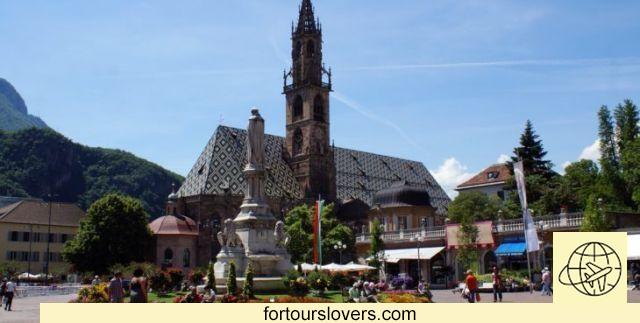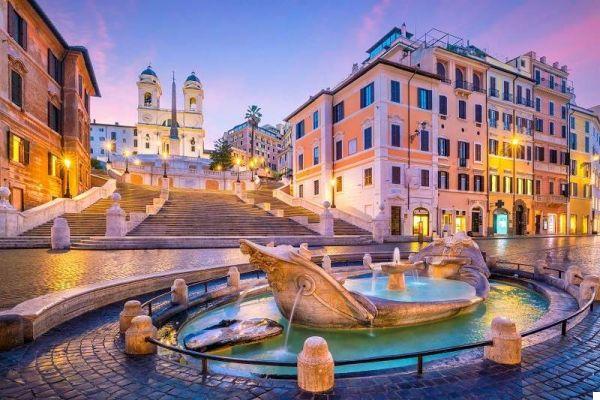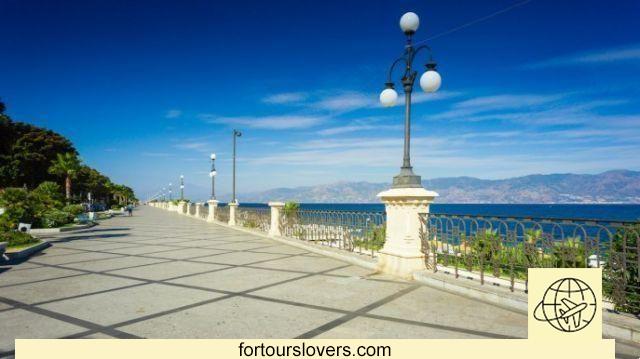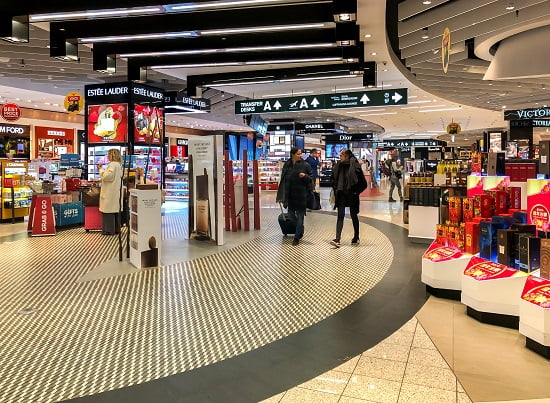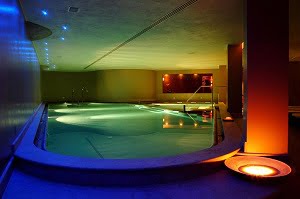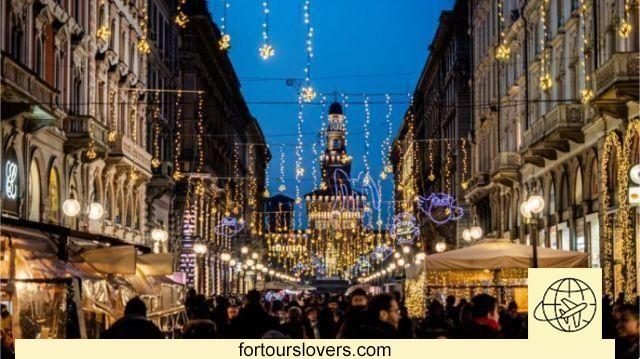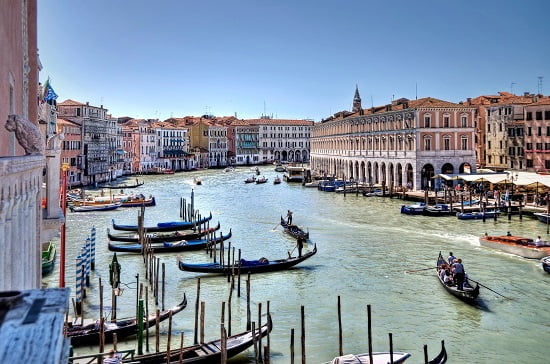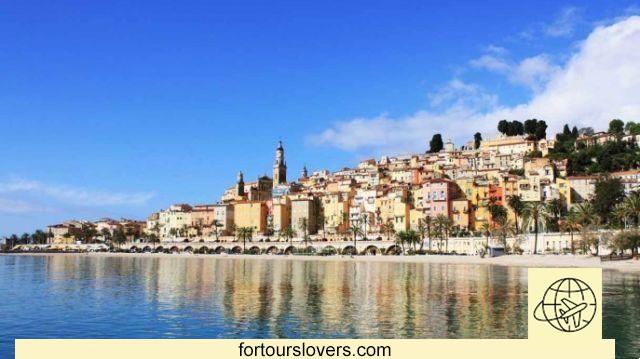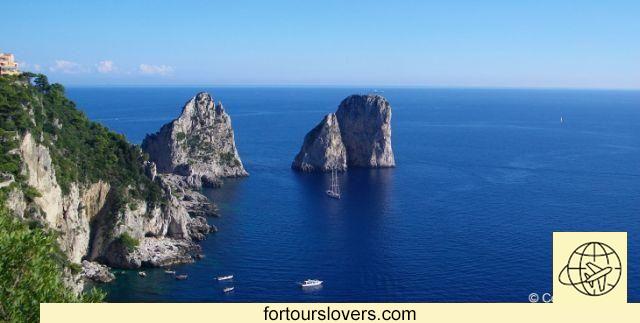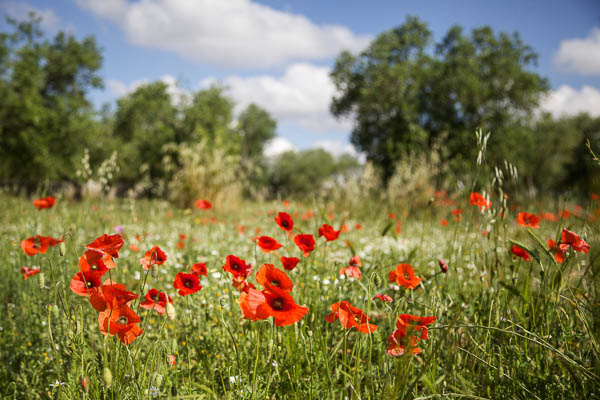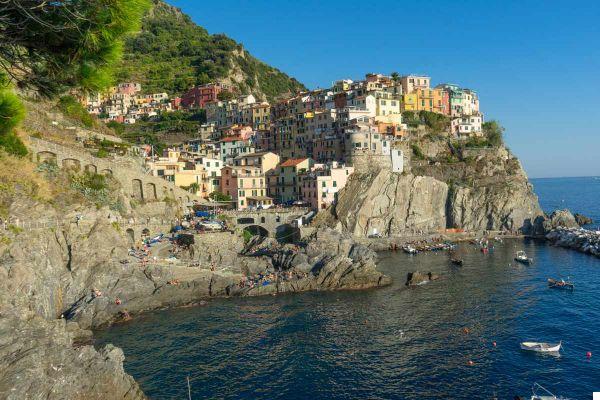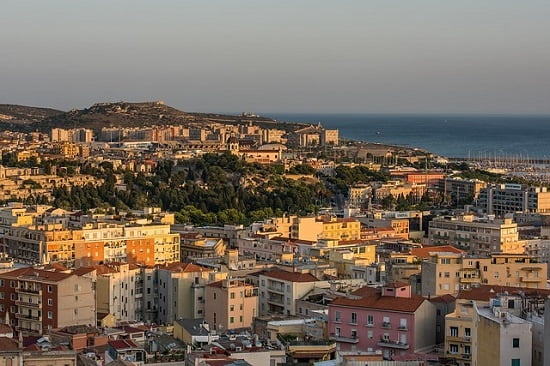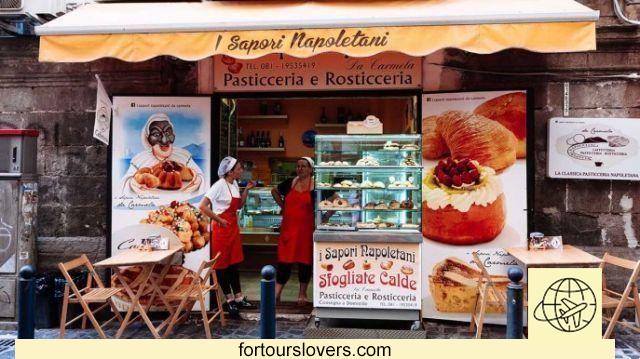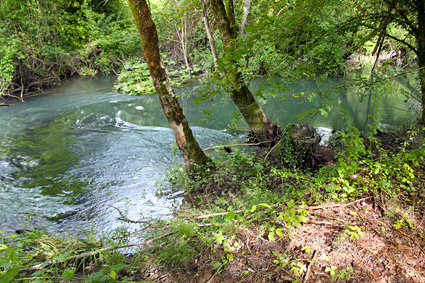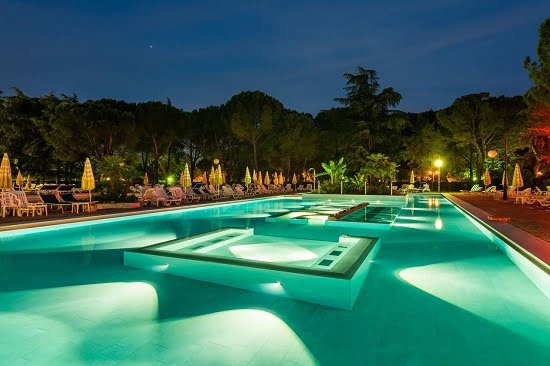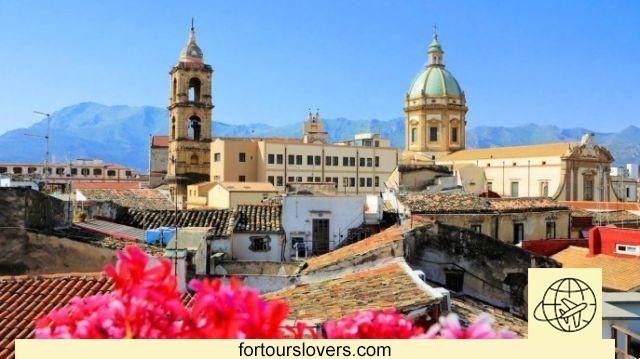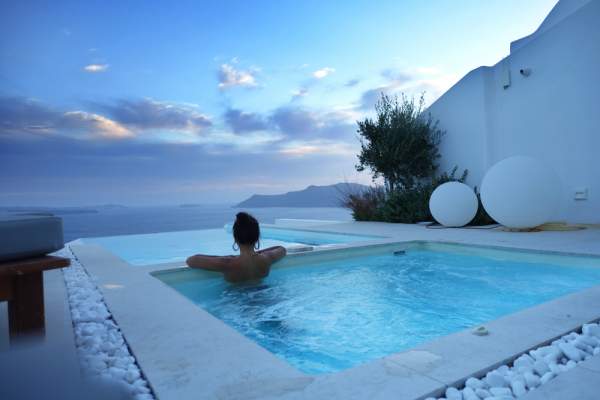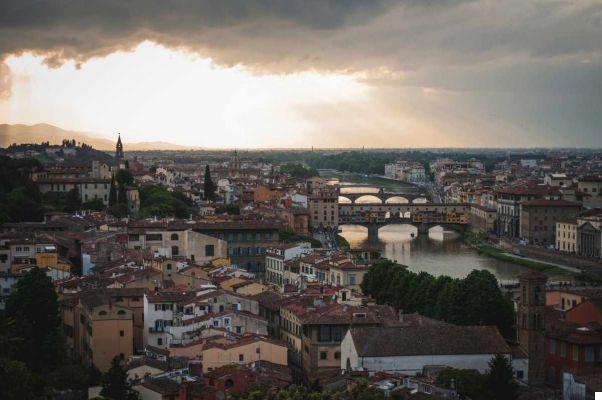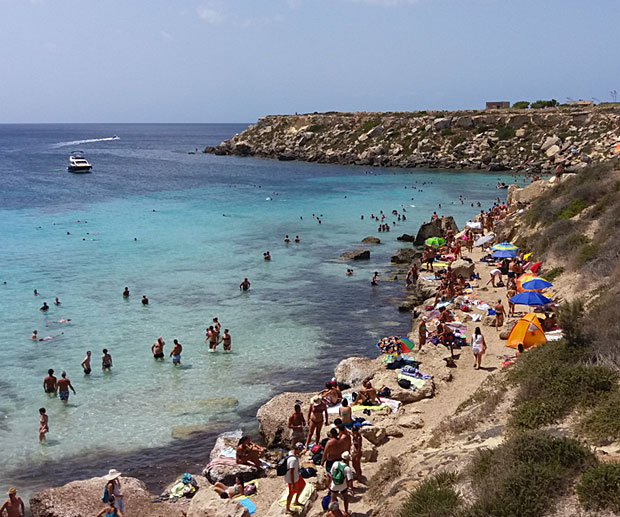Complete Guide to a visit to the Vatican Museums, not to be missed
During an itinerary to Rome, every art lover dreams of visiting the Vatican Museums, especially since the Vatican Museums have reopened their doors to the public!
The museum center of Vatican City, with its more than 70,000 exhibits and an area of over 40,000 square meters, is one of the largest collections in the world. This can complicate the organization of the visit and, if you are not prepared, it will be easy to get lost between the different sections without being able to see the most important works.
First I want to leave you with the buttons below to quickly book both the online ticket for the Sistine Chapel and Vatican Museums and a guided tour in English (super recommended) that includes the Sistine Chapel, Vatican Museums and St. Peter's Basilica!
Due to the COVID 19 pandemic at the moment it is mandatory to book tickets for the tour online, this is to avoid crowds and queues at the ticket office and to keep the right distance.
In addition, tickets are limited, numbered and organized in 30-minute time slots. Be punctual, otherwise you will lose the slot and will not be entitled to a refund.
AT THE MOMENT (2021) THE EXTRAORDINARY OPENINGS ON THE LAST SUNDAY OF THE MONTH ARE SUSPENDED.
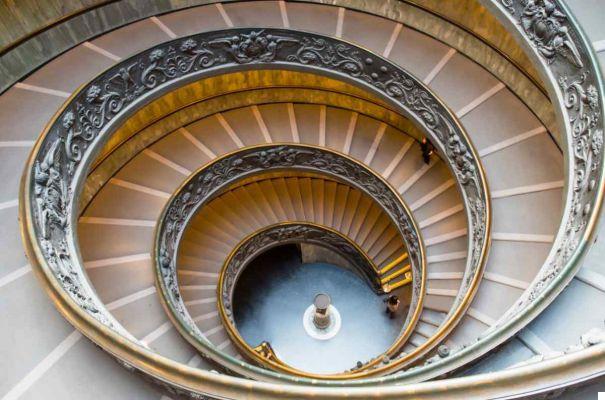
In this article I want to leave you a series of tips on how to best organize your visit to the Vatican Museums.
- 1 - Where to find the Vatican Museums
- 2 - When to go and the best days
- 3 - How to get there and opening hours (2021)
- 4 - How long does it take to visit the Vatican Museums?
- 5 - Tickets and Guided Tours
- 6 - What to see in the Vatican Museums
- 7 - Vatican Museums: the most important works of art
- 8 - Useful tips for visiting the Vatican Museums
- 9 - Other things to see in Vatican City
1 - Where to find the Vatican Museums
The Vatican Museums are located inside the Vatican City. It is worth visiting the smallest state in the world at least once in a lifetime.
From St. Peter's Basilica, the Vatican Gardens, the Vatican Museums and the Sistine Chapel to the archaeological sites, the beauty of the Vatican is unparalleled and every corner is rich in art and history.
2 - When to go to visit the Vatican Museums, the best days
There really is no "best" day to visit the Vatican, which is when it is less crowded.
The Vatican is the most popular tourist destination in Rome and is practically always crowded.
You can consider Tuesday or Thursday as "best days". Dates around a weekend can be a bit more crowded and (usually) there is a papal audience on Wednesdays, which means even more crowds.
From April to October it is possible to book a visit to the Vatican Museums on Friday evenings. And it is much less crowded.
In the morning you can find many groups, both organized and not. In general, everyone (like you and me) always try to arrive as early as possible. However, be aware that with the mandatory space for Covid-19, tickets are now limited and, compared to before, a limited number of visitors can visit the Vatican Museums compared to the past. That said, the afternoon is usually a bit less crowded.
St. Peter's Basilica and the Vatican Museums tend to be busiest on Saturdays, when Rome is filled with weekend visitors from other parts of Italy and Europe.
The Vatican Museums are closed on Sundays. Except for the last Sunday of each month, when they are free(but for the moment the extraordinary opening is SUSPENDED!). This is the busiest day you can imagine to visit the Vatican Museums.
Every Wednesday, if Pope Francis is in Rome, there is an audience with the Pope. The Pope's general audiences are public and, as you can imagine, that day is usually busier because pilgrims who have come to Rome to hear the Pope take the opportunity to visit the Vatican Museums.
As of 12.05.2021, the papal audiences are once again open to the public and will take place in the Cortile di San Damaso.
Regarding the time of year, I winter months in low season are best if you want to be more relaxed and encounter fewer crowds. This means most of December (except December 8 and from Christmas through Epiphany, January 6), January and February. Believe it or not, the Vatican is just as busy between Christmas and January 6 as it is during the summer.
3 - How to get to the Vatican Museums and opening hours (2022)
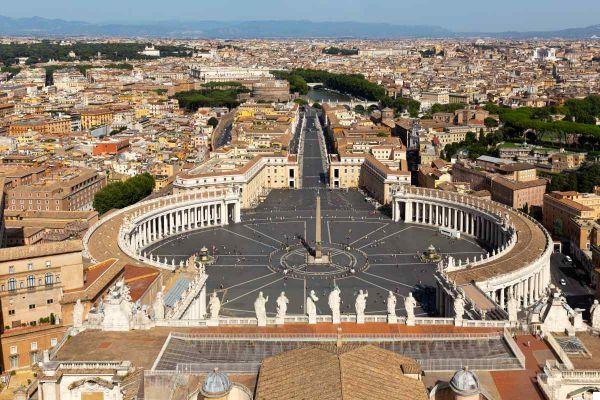
The Vatican is located near the Tiber River. The Vatican is located in the heart of Rome. The whole area is surrounded by walls.
How to reach the Museums by Metro, bus and tramway
To reach the Vatican Museums, follow these directions.
By subway
Take line A towards Battistini and get off at the Ottaviano or Cipro stop.
By bus
With n ° 49 get off at the stop in the square in front of the Vatican Museums.
With n ° 32, 81, 982 get off at the stop Piazza del Risorgimento.
Take the 492, 990 and get off at the Via Leone IV / Via degli Scipioni stop.
By tram
With no. 19 get off at the stop Piazza del Risorgimento.
Timetables of the Vatican Museums (2022)
Vatican Museums times in 2021 (from May 3)
Monday to Thursday: from 8:30 a.m. to 6:30 p.m. (last access at 4:30 p.m.)
Friday and Saturday: from 8:30 a.m. to 8:00 p.m. (last access at 6:00 p.m.)
AT THE MOMENT (2021) THE EXTRAORDINARY OPENINGS ON THE LAST SUNDAY OF THE MONTH ARE SUSPENDED.
In any case, depending on the season the schedules change so I recommend you to take a look at them. HERE.
4 - How long does it take to visit the Vatican Museums?
Since the museum trail stretches for 7 kilometers, you can spend the whole day in Vatican City (joining the gardens and St. Peter's Basilica) here.
However, you still won't be able to see everything the museums have to offer in one visit, but you can certainly enjoy the best things to see inside the Museums even in 3 hours with a guided tour.
The The duration of the visit is about 3 hours. which is the average time for a visit to the Vatican Museums.
Ok, you could be like me a very fast person if you decide to visit them alone, but keep more or less in mind this time, especially if you decide to visit them. visit the Sistine Chapel.
All in all, better to take a little more time than less and have to escape, right?
5 - Tickets and Guided Tours
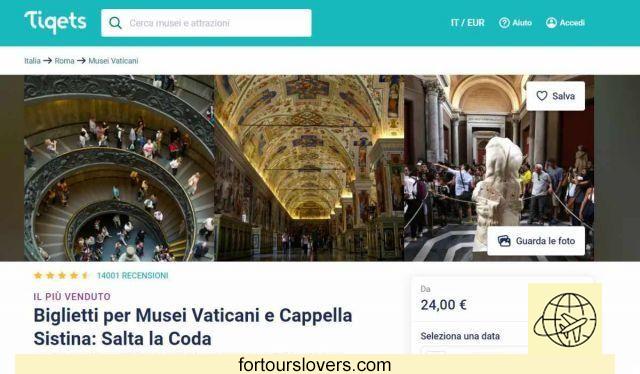
Although, due to the long lines, it was also recommended to buy tickets online in the past, you could still go to the box office and buy them directly on site.
Due to the pandemic of COVID 19 at the moment it has become mandatory to book tickets online, this is to avoid crowds and queues at the ticket office and to keep the right distance.
In addition, tickets are limited, numbered and organized in 30-minute time slots. Be punctual, otherwise you will lose the slot and will not be entitled to a refund.
You have 3 different options (actually there are even more) to visit the Vatican Museums
- Buy tickets with Priority entrance
- Buy a guided tour (recommended)
- Buy the Vatican Pass, the Rome City Pass or the Omnia Card
When you decide to purchase the ticket or a guided tour, you must indicate the specific date and time for your entry.
1 - Priority entrance tickets
If you like the idea of visiting the Vatican Museums on your own and with total autonomy, you can opt for the Sistine Chapel and Vatican Museums tickets that include an audio guide.
This gives you the great advantage of going at your own pace, skipping the parts that do not interest you and stopping a little longer at the parts that catch your attention.
The following options are currently available:
- Entrance ticket only (with audio guide or not).
- Happy Hour
- Hidden Vatican Museums
However, check at the time of booking if others have been added or if some have been removed.
Ticket prices for the Sistine Chapel start at 24 € and you can add an audio guide for only 3,40 €.
If you book a visit to the Vatican Gardens, skip-the-line tickets to the Vatican Museums are included!
3 - Guided tour of the Vatican Museums
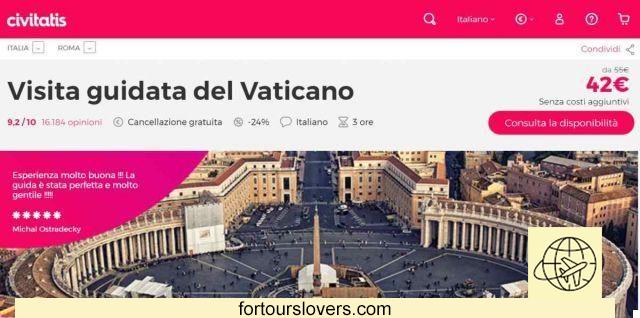
Alternatively (or if tickets are sold out) you can book a guided tour of the Vatican Museums.
This is the best option for me. Just between us: there are places you can visit even without a guide. But as with many of Italy's most famous museums, you'll never really understand what you're looking at without a guide - I highly recommend this option!
Most guided tours consist mainly of a visit inside the Vatican Museums and always include the Sistine Chapel, but this is not the best option.
The best option is guided tours that also include a visit inside the Basilica of San Pietro.
The guide buys your tickets in advance and you enter the Vatican Museums with virtually no work to do!
GUIDED TOUR IN ENGLISH
A guided tour of the Vatican Museums and Basilica lasts approximately three hours in total.
Only authorized tour guides can offer tours inside Vatican City.
3 - VATICAN CARD, OMNIA CARD, ROME CITY CARD
The various Cards are excellent options if you want to avoid the lines at the Vatican Museums and access other attractions in Rome.
There are several subscriptions that offer significant savings in terms of time and money.
VATICAN CARD - a great option that includes:
- Priority entrance to the Vatican Museums and Sistine Chapel.
- Exclusive entrance to St. Peter's Basilica + downloadable audioguide (without dome)
- Entrance to the Colosseum, Roman Forum and Palatine Hill
- Free audio guide of Rome
- Free WiFi at the meeting point
- 15-minute multimedia video on Ancient Rome at the FORO ROMANO Tourist Office
OMNIA CARD - an option with free admission to a variety of museums, but in my opinion less convenient than the others. Includes:
- Priority access to the Vatican Museums and Sistine Chapel.
- Priority access to St. Peter's Basilica with audioguide
- Free use of public transportation in Rome for 72 hours (72 hour card)
- Roma Pass access to two museums or archaeological sites on the Roma Pass circuit, plus other discounts (72-hour card)
THE BEST OF ROME ALL ACCESS CARD - a fantastic option that includes priority entrance to the Vatican, Sistine Chapel, St. Peter's Basilica, Colosseum, Roman Forum and Palatine Hill, and also provides an audio guide to make the most of the attractions.
Whichever pass you choose, be sure to read the terms and conditions AND if you need to reserve a specific date and time to enter some of the attractions!
6 - What to see at the Vatican Museums
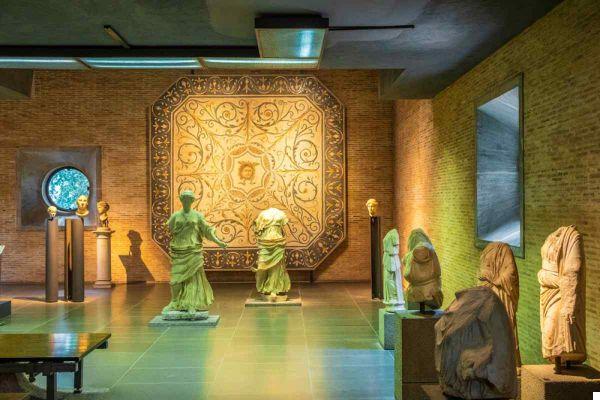
The main things to see when visiting Vatican City are St. Peter's Basilica and the Vatican Museums. (To be clear, Michelangelo's Pieta is inside St. Peter's Basilica and Michelangelo's Sistine Chapel is inside the Vatican Museums).
You can also decide to see one and not the other, but that would really be a waste. Visiting both is very doable.
The Vatican Museums, as the name implies, are made up of a series of sections and buildings.
Think there are 11,000 rooms in the Vatican Museums and, therefore, I think it's impossible to visit them all!
The itinerary to visit the Vatican Museums, however, follows the outward visit conceived by the Direction of the Museum by which you will see only the most important works.
What are the Vatican Museums?
- Vatican Picture Gallery;
- Collection of Modern Religious Art;
- Pio-Clementine Museum;
- Missionary - Ethnological Museum;
- Gregorian Egyptian Museum;
- Gregorian Etruscan Museum;
- Pio Christian Museum;
- Gregorian Profane Museum;
- Carriage Pavilion;
- Philatelic and Numismatic Museum;
- Museums of the Vatican Apostolic Library;
- Chiaramonti Museum;
The Galleries of the Vatican Palaces
- Lapidary Gallery;
- Gallery called Braccio Nuovo;
- Gallery of the Candelabra;
- Gallery of the Tapestries;
- Gallery of Geographical Maps.
The Chapels of the Vatican Palaces
- Sistine Chapel;
- Niccolina Chapel;
- Chapel of Urban VIII.
The rooms of the Vatican Palaces
- Hall of the Chariot;
- Apartment of St. Pius V;
- Sobieski Hall;
- Hall of the Immaculate Conception;
- Raphael's rooms;
- Raphael's Loggia;
- Hall of the Chiaroscuri;
- Borgia Apartment;
- Rooms of the Greek originals.
7 - Vatican Museums: the most important works of art
Surely you have understood the extent of the museum complex and have realized why it will be impossible for you to visit it all at once.
For this, I will list below. There are 10 areas that, if you decide not to follow a guide but go alone, are the ones you should include in your itinerary if it is the first time you visit the Vatican Museums and that will allow you to see the most important works.
I suggest that you carefully consult the map of the Vatican Museums so that you do not get lost among the other sections. The map can be downloaded online or picked up for free at the ticket office.
1 - Sistine Chapel
The Sistine Chapel It is undoubtedly the masterpiece par excellence of the Vatican Museums. You cannot leave Vatican City without admiring Michelangelo Buonarroti's masterpiece.
The Chapel takes its name from Pope Sixtus VI della Rovere, who commissioned it. The building was built between 1475 and 1481, while the decorations that cover the vault date back to 1508-1512.
On the west wall, that of the altar, one can admire Michelangelo's famous Last Judgment, while in the central part of the vault the artist depicted nine episodes taken from the Book of Genesis of the Bible.
Among the brilliant colors of what is perhaps the most incredible artistic masterpiece of all time, you will find yourself reflecting on the meaning of life and the destiny of humanity. An artistic experience, but also a spiritual one.
Inside the Sistine Chapel the conclave is held, which can be defined as the elections for the election of the new Pope.
Remember that inside the Chapel absolute silence must be respected.
2 - Raphael's rooms
Le Raphael rooms, in my opinion, are surpassed only by the Sistine Chapel.
These were once the apartments of Pope Julius II who entrusted Raffaello Sanzio with the task of frescoing them.
Among the four rooms, the most famous is undoubtedly the Stanza della Segnatura, once the Pope's private library. The frescoes on the walls represent the four main disciplines of knowledge: theology is represented by the dispute of the sacrament, philosophy in the school of Athens, poetry with the Parnassus and jurisprudence with virtue and law.
The School of Athens is the most famous work and, if you look closely, you will recognize some of Raphael's contemporary artists in the role of Greek philosophers: we see, for example, Michelangelo and Bramante.
3 - Pio - Clementine Museum
Il Pio - Museo Clementino is the core of the Vatican Museums and owes its name to Pope Clement XIV Ganganelli and Pope Pius VI Braschi, who transformed the Vatican collection into a museum open to the public.
The area consists of 12 rooms housing marvelous sculptures from the Roman and Greek periods. It is here, in the Octagonal Courtyard, that the Lacoonte Group can be admired.
Also in the Octagonal Courtyard is the cabinet of Canova: here is kept "Perseus with the head of Medusa between two Boxers", a wonderful work by Antonio Canova.
4 - Gregorian Egyptian Museum
The nine rooms of the Gregorian Egyptian Museum contain Egyptian archaeological finds from the city, mostly from Hadrian's Villa in Tivoli.
The museum was founded by Pope Gregory XVI in 1839 and houses papyri, mummies, hieroglyphic inscriptions and the famous Book of the Dead, a papyrus over 16 meters long dating from the second half of the 6th century BC and belonging to the priest. Pacherientaihet.
If you are passionate about Ancient Egypt, you should not miss this section.
5 - Gallery of images
The Gallery was commissioned by Pope Pius XI and consists of 11 rooms in which about 460 works are exhibited.
In order not to risk staying here for hours overwhelmed by so much beauty, my advice is to focus on the most important works. I suggest four of them: the Stefaneschi Polyptych by Giotto, The Transfiguration by Raphael, the San Girolamo by Leonardo da Vinci and the Deposition by Caravaggio.
A curiosity: the Stefaneschi Polyptych was intended for the main altar of the ancient Basilica of San Pietro.
6 - Contemporary Art Collection
Among the Vatican museums, the Contemporary Art Collection is perhaps the most astonishing. It was created at the request of Paul VI, who wanted to re-establish the dialogue between the Church and contemporary culture.
The collection contains works ranging from the end of the 19th century to the end of the 20th century. There are even 55 rooms and about 800 works on display: you can admire paintings by Van Gogh, Gauguin, Goya, Kandisky, Chagall, Klee, de Chirico, Morandi, Guttuso and many others.
If you are passionate about contemporary art, plan to spend a good hour inside, if not more.
7 - Ethnological Museum
The Ethnological Museum originated with the end of the Universal Missionary Exhibition instituted on the occasion of the Jubilee of 1925 and houses relics, objects and works of religious character from all over the world.
The itinerary is very particular: inside are exhibited prehistoric artifacts, to recent donations to the pontiff and develops between testimonies of Asian spiritual religions, Islamic sacred objects, African productions and works of Australia.
8 - Chapel of San Pietro Martire
The frescoes and stuccoes of the Chapel of San Pietro Martire are the work of Vasari and his pupil Jacopo Zucchi. Inside are the relics of the Sancta Sanctorum, the ancient chapel of the Palazzo dei Papi in the Lateran, which were recovered in 1905 from a box belonging to Pope Leo III.
9 - The Gallery of Geographical Maps
The Gallery of Geographical Maps is one of the most evocative environments of all the Vatican Museums.
The walls of this corridor, 120 meters long and 6 meters wide, are decorated with a series of geographical maps commissioned by Pope Gregory XIII to Ignazio Danti. On one side you can admire the maps of the regions washed by the Ligurian Sea and the Tyrrhenian Sea, on the other side, those washed by the Adriatic.
Each regional map is accompanied by a map of the most important cities. The Gallery, then, ends with a view of the main ports of Italy.
Besides being one of the most evocative places in the whole complex of the Vatican Museums, the Gallery of Geographical Maps is also one of the most precious testimonies to study the geographical knowledge of the time.
Have fun looking for your city on these topographical maps!
10 - The helical staircase
Finally, just as you leave the Vatican Museums, you will find yourself walking down one of the most spectacular staircases in the world.
This double helical spiral staircase was designed by Giuseppe Momo in 1932 and does not allow those going up to meet those going down and vice versa.
Once down, look up: the look is amazing.
8 - Useful tips to visit the Vatican Museums
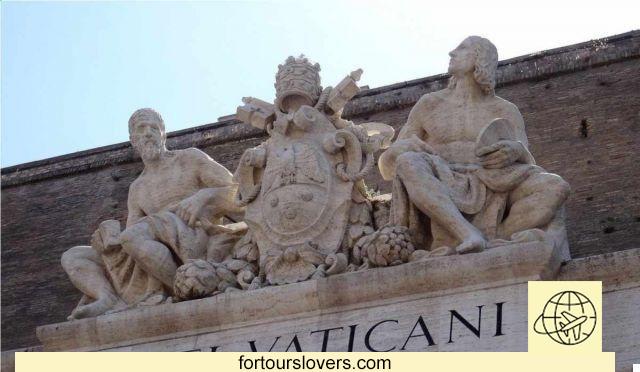
Here are some tips for visiting the Vatican Museums:
- Resign yourself, you won't be able to see everything at once. If you are visiting the Vatican Museums for the first time, you will have to make a selection. So rent an audio guide or join a guided tour, but decide ahead of time what you really want to see.
- Book tickets in advance. Lines at the ticket booths can be very long and the only way to save time is to buy tickets online.
- With the Vatican Pass, you can see many things: museums, Sistine Chapel, Colosseum, Roman Forum and more.
- With the ALL CARD you have the Vatican Museums, the Colosseum and many other things included -> See HERE what else is included.
- Wear decent clothes. In fact, it is not allowed access to the Vatican Museums to people wearing the arms and / or low-cut clothing, shorts, miniskirts and hats.
- Ricordati che It is forbidden the consumption of food and beverages. inside the exhibition halls. Along the way, however, there are numerous vending machines and refreshment points.
- Inside the Vatican Museums you can take pictures without flash for personal purposes only, but remember that inside the Sistine Chapel it is absolutely forbidden to take pictures or record videos.
- Beware of scams: Be aware that there will be many companies that may offer tours outside the Vatican walls. To avoid scams, we recommend that you always book prior to your arrival.
- Bring a snack with you: a bar, a piece of fruit or even a small sandwich.
- Wear comfortable shoes
9 - Other things to see in Vatican City
1 - St. Peter's Square and Basilica
St. Peter's Square is the symbol and heart of Vatican City and that's why I recommend you start your visit from here.
Designed by Gian Lorenzo Bernini, Piazza San Pietro is characterized by its elliptical shape and a quadruple row of columns; with a porch on top. The 140 statues placed at the top of the portico represent the saints.
In the center of the square is theVatican Obelisk, behind which stands the largest church in the world, St. Peter's Basilica.
You'll be breathless in front of its 115-meter wide facade with the great dome on top. Look for the central window, the so-called Loggia of Blessings, from which the Pope presents the message of greetings urbi et orbi ("to the city and the world") immediately after his election, and on the occasion of religious feasts.
The interior of the Basilica contains a number of priceless works of art such as Michelangelo's Pietà (considered one of the most precious marble statues in the world);
Above the papal altar is Bernini's bronze canopy.
In addition to St. Peter's Basilica, there are many other churches inside the Vatican that are worth visiting, perhaps with an organized tour.
2 - The Vatican Gardens
Take a stroll through the Giardini Vaticani (only authorized tours are allowed) among its cheerful fountains, streams, temples and caves. Weather permitting, it is worth visiting the majestic open-air spaces that occupy almost two-thirds of Vatican City.
Below St. Peter's Basilica, you can visit the necropolis, a Roman cemetery, which is the burial place of St. Peter, the first pope.
In this area you will also find the Vatican Grottoes, which houses the tombs of all the popes.




